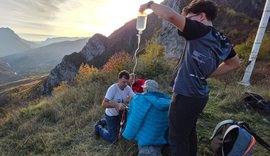

Ata e kanë hapur këtë tunel në përpjekje që të largoheshin nga nazistët gjatë Luftës së Dytë Botërore. Ky autoritet ka thënë se ekipi i përbërë me kërkues nga Izraeli, SHBA-të, Kanadaja dhe Lituania, kanë përdorur teknologji skanimi për zbulim të naftës, për të gjetur tunelin.
Tuneli i gjatë 35 metra është gjetur në malin Ponar, i njohur sot me emrin Paneriai, ku nazistët kanë vrarë 100 mijë njerëz. Gjatë fundit të luftës, të burgosurit janë dërguar në kampin e përqëndrimit në Stutthof dhe ku janë detyruar që të djegin trupat e pajetë.
Në mënyrë të fshehtë, ata kanë gërrmuar tunelin . 40 të burgosur kanë arritur të arratisen përmes tunelit në vitin 1944 dhe kanë arritur deri te forcat partizane.

























